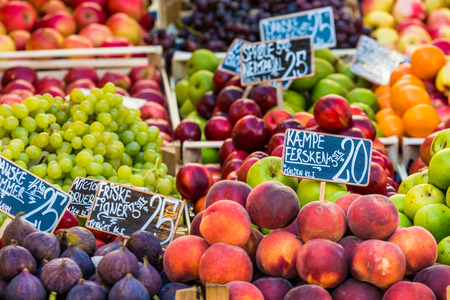Celebrating British Spring Produce
As winter fades and the first signs of spring emerge across the UK, a renewed sense of vitality fills the air. This season marks an important shift in the British culinary calendar, when local markets and greengrocers brim with early harvests. Traditionally, spring has long been celebrated for its abundance of fresh, locally sourced produce. The arrival of crisp asparagus, tender broad beans, vibrant rhubarb, and peppery watercress signals not just the changing weather, but also a deep-rooted appreciation for seasonal eating. In Britain, enjoying these early crops is both a cultural custom and a practical way to embrace foods at their nutritional peak.
Seasonal Stars: What’s in Season in Early Spring
As the chill of winter subsides, British fields and allotments begin to yield a vibrant selection of fresh produce. Early spring offers a variety of nutrient-rich crops that are both locally grown and deeply rooted in UK culinary traditions. Understanding what’s in season not only helps you enjoy the freshest flavours, but also supports sustainable eating and British farmers.
Typical British Spring Crops
During early spring, several iconic vegetables make their much-anticipated appearance on market stalls and supermarket shelves. Among these, asparagus, rhubarb, spring greens, radishes, and Jersey Royal potatoes are particularly noteworthy for their flavour profiles and nutritional benefits.
Key British Springtime Vegetables
| Crop | Peak Season | Main Nutrients | Common Uses |
|---|---|---|---|
| Asparagus | April – June | Folate, Vitamins A & C, Fibre | Steamed, roasted, soups, salads |
| Rhubarb | March – May | Vitamin K, Calcium, Fibre | Crumble, compote, chutney |
| Spring Greens | March – June | Vitamin C, Vitamin K, Iron | Sautéed, stir-fried, soups |
| Radishes | March – June | Vitamin C, Potassium, Antioxidants | Salads, pickles, garnishes |
| Jersey Royal Potatoes | April – July | Potassium, Vitamin B6, Carbohydrates | Boiled with mint, salads, side dish |
The Significance of Local Harvests in British Culture
The arrival of these vegetables is celebrated across the country; for example, the first cut of British asparagus is often marked with local festivals. Jersey Royals hold protected designation of origin status and are a cherished seasonal delicacy. Embracing these homegrown ingredients not only aligns with environmental goals but also connects us to a longstanding British appreciation for seasonal abundance.

3. Nutritional Highlights of Spring Vegetables and Fruits
Spring in the UK brings a bounty of fresh produce, each offering a unique profile of essential nutrients that contribute to public health. Among the stars of early British harvests are asparagus, broad beans, watercress, rhubarb, and new potatoes—each packed with vitamins, minerals, and phytonutrients vital for optimal wellbeing.
Vitamins That Support Health
Many spring vegetables and fruits are especially rich in vitamin C, crucial for immune function and collagen synthesis. Watercress and spring greens stand out as excellent sources. Asparagus delivers notable amounts of vitamin K, important for bone health and blood clotting. New potatoes provide vitamin B6, supporting energy metabolism and nervous system health. Rhubarb adds a modest amount of vitamin A, which is essential for vision and skin integrity.
Essential Minerals in British Produce
Early British crops also supply key minerals. Broad beans are high in iron and magnesium, which play roles in oxygen transport and muscle function respectively. Asparagus offers potassium for healthy blood pressure regulation, while new potatoes contain both potassium and magnesium. Watercress provides calcium—important for maintaining strong bones—and iodine, which supports thyroid health.
Phytonutrients: Nature’s Protective Compounds
Beyond vitamins and minerals, spring produce is a source of phytonutrients—plant compounds linked to long-term health benefits. For example, asparagus contains glutathione, an antioxidant involved in cellular detoxification. Watercress is rich in glucosinolates, studied for their potential protective effect against certain cancers. The vibrant pink hue of rhubarb is due to anthocyanins, powerful antioxidants associated with cardiovascular health.
A Data-Driven Approach to Spring Nutrition
Integrating these seasonal foods into the diet can help address common nutritional shortfalls identified in UK public health data, such as low intakes of fibre, potassium, and certain vitamins. By making the most of local springtime abundance, individuals can access a diverse range of nutrients that support overall health while enjoying flavours unique to the British growing season.
4. Health Benefits of Embracing Local Springtime Foods
Choosing fresh, British-grown spring produce offers a wealth of evidence-backed health benefits. Early season vegetables and fruits are harvested at their nutritional peak, ensuring maximum vitamin and mineral content. For example, British asparagus is a rich source of folate, while spring greens such as kale and spinach provide high levels of vitamin C and iron. These nutrients play vital roles in supporting immune function and energy production.
Immune Support from Spring Produce
Consuming local spring crops can significantly benefit the immune system. Studies indicate that foods like watercress, radishes, and rhubarb contain antioxidants and phytonutrients that help reduce inflammation and bolster the body’s defences against seasonal illnesses. Vitamin C-rich vegetables, such as spring cabbage and purple sprouting broccoli, are particularly effective in enhancing immune responses.
Digestive Wellness Through Fibre-Rich Choices
Springtime British produce is also notable for its fibre content, which supports digestive health. Vegetables like leeks, peas, and broad beans offer both soluble and insoluble fibres that promote gut motility and nourish beneficial gut bacteria. Research from UK-based nutrition studies demonstrates a clear association between higher fibre intake from fresh vegetables and improved digestive outcomes among adults.
Key Nutritional Highlights of Early British Produce
| Produce | Main Nutrients | Primary Health Benefit |
|---|---|---|
| Asparagus | Folate, Vitamin K | Cell repair, bone health |
| Watercress | Vitamin C, Antioxidants | Immune support, inflammation reduction |
| Kale | Iron, Vitamin C | Energy production, immune support |
| Leeks | Fibre, Manganese | Digestive wellness, metabolism support |
The synergy between seasonally grown produce and optimal nutrient absorption cannot be overstated. By prioritising fresh British spring foods, individuals can harness these data-driven benefits to support overall wellbeing throughout the season.
5. Incorporating Spring Produce into Everyday British Meals
Early spring produce in the UK, such as asparagus, rhubarb, new potatoes, and spring greens, offers a vibrant boost to the traditional British kitchen. Integrating these fresh ingredients into daily meals not only enhances nutritional value but also brings seasonal variety to the table.
Easy Swaps for Classic Dishes
For a modern twist on Sunday roast, try swapping root vegetables with roasted spring carrots or tenderstem broccoli. Asparagus spears can be quickly steamed and served as a side with lamb or chicken. For vegetarians, adding wilted spring greens into a cottage pie filling provides extra vitamins and minerals.
Breakfast and Brunch Ideas
Rhubarb compote is a quintessentially British way to start the day—simply stew chopped rhubarb with a touch of honey and serve over porridge or Greek yoghurt. Alternatively, add finely chopped spring onions to scrambled eggs or an omelette for a subtle peppery note.
Light Lunches for Warmer Days
New potatoes are perfect for salads; combine them with peas, mint, and a light vinaigrette for a refreshing lunch. A classic Ploughman’s platter can be updated by including radishes and baby spinach alongside mature cheddar and wholemeal bread.
Making It Family-Friendly
Children may enjoy helping prepare simple dishes like pea and mint soup or assembling vegetable-packed wraps using lettuce leaves instead of tortillas. Encouraging family involvement not only makes mealtimes more enjoyable but also fosters healthy eating habits.
Shopping and Storage Tips
For best results, buy locally grown produce from farmers’ markets or veg box schemes when possible—this supports UK growers and ensures maximum freshness. Store leafy greens in the fridge wrapped in damp paper towels, and keep potatoes in a cool, dark place to prolong shelf life.
By embracing early spring’s bounty in everyday cooking, UK households can enjoy both improved nutrition and the unique flavours that mark the start of Britain’s growing season.
Sustainability and Supporting British Farmers
Choosing local, seasonal produce during the British springtime is more than just a culinary decision—it is a commitment to environmental sustainability and the future of UK agriculture. By prioritising early harvests such as British asparagus, radishes, spring greens, and rhubarb, consumers help reduce the carbon footprint associated with food miles. Locally grown fruits and vegetables require less transportation and refrigeration compared to imported alternatives, directly lowering greenhouse gas emissions.
Moreover, eating in tune with the seasons aligns with natural growing cycles, which typically demand fewer chemical inputs and less artificial intervention. This means fewer pesticides and fertilisers are needed, reducing both soil degradation and water pollution. From a data-driven perspective, studies show that seasonal produce often contains higher nutrient levels due to reduced storage times and fresher harvesting practices.
Supporting British farmers by choosing homegrown produce also strengthens the local economy. It ensures that profits remain within rural communities, helping sustain family-run farms and preserving traditional agricultural practices. This financial support enables farmers to invest in sustainable farming methods, biodiversity conservation, and improved animal welfare standards—initiatives that benefit both people and planet.
In summary, opting for early British produce not only delivers superior taste and nutritional benefits but also plays a pivotal role in environmental stewardship. Making conscious choices at the greengrocer or supermarket reinforces a positive cycle: promoting eco-friendly agriculture while safeguarding the livelihoods of British farmers for generations to come.


